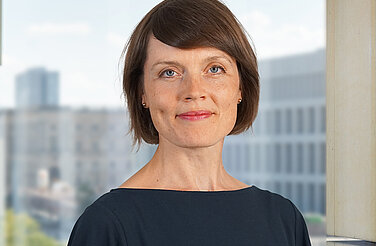Coordinated grids planning could save Europe 560 billion euros by 2050
Optimising energy infrastructure investments across the EU could deliver significant savings while helping to ensure a resilient energy system by 2050, a new analysis by Agora Energiewende and think tank partners finds. By adopting an integrated approach to modelling the energy system, the EU can reduce costs, accelerate renewable energy deployment and strengthen the foundation needed for climate neutrality.

Brussels, 18 November 2025. European countries can reduce energy system costs by over 560 billion euros between 2030 and 2050 by optimising infrastructure investment, according to a new analysis by Agora Energiewende. The number increases to 750 billion euros if the savings from avoided back-up generation are considered. These savings would stem from an integrated approach to energy infrastructure planning that unlocks efficiency gains, directs investments to where they are most needed and maximises the benefits of a flexible energy system.
The analysis was carried out in collaboration with four other European energy think tanks: Forum Energii, IDDRI, ECCO and the Energy Policy Group (EPG). It is based on comprehensive energy system modelling by Fraunhofer IEG, Fraunhofer ISI and d-fine and provides recommendations for more robust infrastructure modelling on the way to climate neutrality ahead of the publication of the European Commission’s ‘Grids Package’.
“Infrastructure is the backbone of Europe’s evolving energy system, and governance structures need to keep pace with the rapid transformation,” said Frauke Thies, Co-Director Europe at Agora Energiewende. “Well-coordinated planning is essential to ensure that investments flow where they best support the deployment of clean technologies like solar, wind and batteries – delivering secure and affordable energy.”
A holistic modelling approach
The Fraunhofer model takes a novel approach that integrates multiple energy carriers and geographies within a single framework. It reveals cross-sectoral synergies and efficiencies often missed in the more fragmented methods that are commonly used in today’s infrastructure planning processes. The modelling examines four scenarios across two dimensions: cross-sectoral versus sectoral, and European optimisation versus greater national focus. Combining these dimensions allows for an assessment of system and cost effects. Unlike modelling that considers geographies or sectors side-by-side, the model co-optimises energy supply, storage and transmission investment across these dimensions to identify solutions that would otherwise be overlooked.
The results indicate that overall energy supply and sector-coupling capacity can be reduced in several areas. An integrated scenario would require 505 gigawatts less back-up capacity, 15 percent less onshore wind capacity and 9 percent less hydrogen electrolyser capacity than a more nationally focused, sectoral approach. All scenarios show an acceleration of renewable energy build-out that increasingly replaces the use of fossil fuels.
The study’s assumptions for energy demand follow conservative trajectories within the middle to upper ranges of other modelling exercises, to enable robust conclusions on infrastructure needs. The model identifies solutions for electricity, hydrogen, gas and carbon dioxide transmission-level infrastructure within the scenario optimisations. The results show that investments in the electricity grid consistently appear as a priority across all scenarios. This finding underlines the role of electrification in decarbonising the European economy and reflects the policy emphasis on efficiency and electrification, as seen for example in the EU’s Energy System Integration Strategy, Fit for 55 package and the Action Plan for Affordable Energy. The need for fossil gas pipelines will rapidly decline, while targeted new infrastructure is needed for hydrogen and carbon dioxide.
“Rapid electrification of end-use sectors like transport, heating and low-temperature industrial heat is central to a successful transition. Cross-European energy modelling can help identify priority investments, such as in the grid, and should therefore play a key role in shaping Europe’s pathway to a resilient, efficient and climate-neutral energy system,” Thies said.
Strengthening European infrastructure planning
To unlock the benefits of an integrated approach to infrastructure planning, the think tanks stress the importance of conducting high-level, independent and transparent modelling across energy carriers and sectors.
An integrated approach would provide European countries a clear vision of the energy system, guiding and informing bottom-up infrastructure planning. This overview would help ensure that investments are aligned with the priorities of the energy transition, particularly the increasing focus on electricity infrastructure to support a cleaner energy system. Since molecules – while necessary – will primarily be used in clusters to meet specific demands, a cluster-based approach for infrastructure planning would help optimise their use within the broader energy system, the paper notes.
Additionally, a top-down approach to scenario-building would help identify areas where investment is needed to enable greater participation in European energy markets, ensuring that Member States can maximise the collective benefits of an integrated energy system. The think tanks recommend tasking an existing European body, for example the European Commission, to carry out the high-level modelling to guide bottom-up planning. A more transparent, open and iterative modelling process would provide national governments and regulatory authorities more detailed information about system costs and benefits. This enhanced visibility could empower greater coordination across regions and the EU as a whole, ultimately advancing the energy transition in a more effective and cost-efficient manner, the paper concludes.
The 27-page report entitled Designing energy infrastructure for a climate-neutral Europe: Solutions for cost-effective system development was written by Agora Energiewende, in collaboration with Forum Energii, IDDRI, ECCO and the Energy Policy Group (EPG). It draws on extensive energy system modelling by Fraunhofer IEG, Fraunhofer ISI and d-fine which analyses the role that integrated infrastructure planning plays in the transformation of the European energy system on the path to climate neutrality by 2050. The report and underlying technical analysis are available for free download below.



